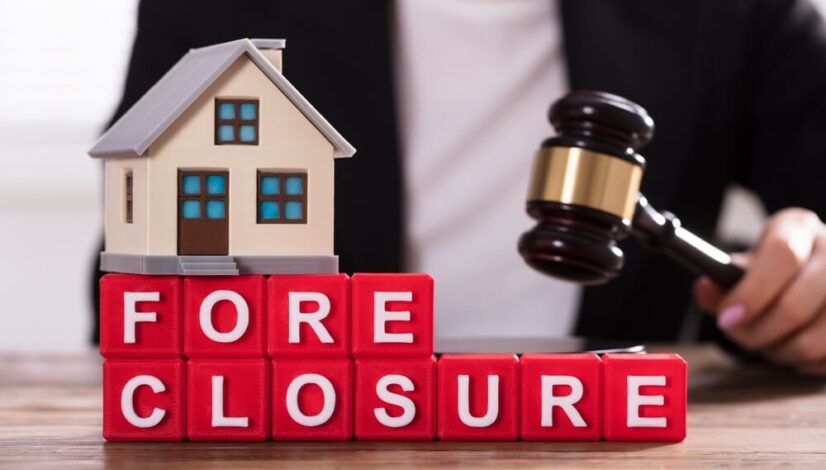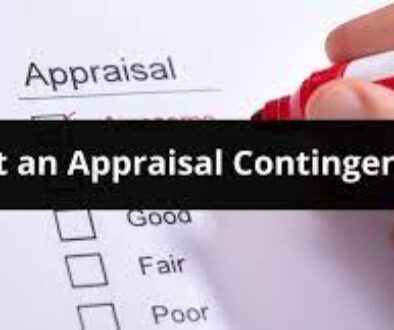Foreclosure Defined
Foreclosure Defined
No one ever wants to think about losing their home. Whether you’re seeking a foreclosure definition because you’re dealing with the process yourself, buying a foreclosed home or just looking to be prepared for anything, it’s important to understand what you might be dealing with and how you can protect your home if needed.
What Is Foreclosure?
Foreclosure is a process that begins when a borrower fails to make their mortgage payments. When a home is foreclosed upon, the lender typically repossesses and attempts to sell the house.
This happens because mortgage loans are secured by real estate, meaning your home is used as collateral. Since your home is the collateral, it can legally be seized by your lender when you fail to make payments.
What Is The Foreclosure Moratorium?
Following the economic crisis caused by the COVID-19 pandemic, a foreclosure moratorium was put in place by the Coronavirus Aid, Relief, And Economic Security (CARES) Act. This means that, for a period of time, no foreclosures could take place. This was done to offer flexibility to homeowners that might be struggling and to prevent a widespread foreclosure crisis. During this period, homeowners could also request forbearance – which is when your servicer or lender allows you to pause mortgage payments for a period of time, though you would have to repay these missed payments later on.
What Is The Process Of Foreclosure?
The foreclosure process might differ slightly from state to state, but at a glance, each foreclosure will have the same general steps, which we’ll take a look at now.
Early Intervention
Before a lender can proceed with the foreclosure process, the loan must be at least 120 days delinquent, with some exceptions. Servicers are required to make good faith efforts to contact the borrower about missed payments and to discuss alternatives to foreclosure. Even after foreclosure is filed, the borrower typically still has a few options to avoid losing their home to foreclosure.
A lender will usually start by attempting to contact the borrower about the missed payments in order to work out a solution. If no solution can be reached – and the borrower is missing at least 4 payments, unless the property is vacant – the foreclosure process proceeds.
The first step in the foreclosure process occurs when servicers refer the loan to foreclosure counsel. At this point, attorneys file first legal, which can be a complaint or a notice of default, depending on the state. To ‘default’ on a loan means that a borrower has failed to repay their loan according to the terms originally set.
Even after the first legal is filed, borrowers can still apply for loss mitigation and seek options to avoid losing their home to foreclosure.
Judicial Foreclosures Vs. Non-Judicial Foreclosures
There are two types of foreclosures: judicial foreclosure and non-judicial foreclosure. Judicial foreclosures can take place in all states and may be required in some. Under this type of foreclosure, your lender files a lawsuit with the judicial system, assuming your mortgage note does not have a power of sale clause. You as the borrower then have a period of time to respond and pay – and if you do not, your home can then be foreclosed upon and sold. The judicial foreclosure process tends to be much more time consuming than nonjudicial foreclosures.
Nonjudicial foreclosure typically occurs when your mortgage has a power of sale clause or if your promissory note is tied to a deed of trust. If a borrower has a power of sale clause in their mortgage and defaults on the loan, the clause allows the mortgage company to auction off the home after a warning and waiting period without involving a court. In the case of a deed of trust, the trustee, usually a title company, can also seize a property and sell it without a court order if the borrower defaults.
Eviction
After a home is foreclosed upon, the residents of the house may be issued a notice to quit letter or other warning to vacate the premises. The method of alerting a borrower of the threat of eviction varies based on your state. A letter or warning typically gives residents a period of time (usually between 3 and 30 days) in which they have to vacate the premises.
If the residents do not leave and ignore an eviction notice, they can be sued. A lawsuit of this manner could severely hurt a borrower’s ability to rent or buy property again, so vacating is the best option.
Credit Reporting
A foreclosure is considered a very negative event on your credit report and will remain on it for seven years after the date of your first missed mortgage payment. The number of points by which a foreclosure will impact your credit score varies depending on your credit history.
The hit your credit takes from a foreclosure can impair your ability to purchase or even rent a home again. While many lenders will not even consider an applicant with a foreclosure in their credit history, others may be more forgiving, especially if a foreclosure is a few years in the past.
How Can I Avoid Foreclosure?
If you’ve received a notice of default, don’t panic – as we mentioned before, you still have a few options to avoid foreclosure. Let’s go over a few of those options now to see what might be right for your situation.
Ask For Forbearance
If you recall from earlier, forbearance allows borrowers to pause mortgage payments for a limited time while they rebuild savings, increase income or decrease debt after experiencing financial difficulties.The payments aren’t erased, but there are plenty of options to resolve the delinquency: repayment plans, loan modification, deferral, partial claims, etc.
Apply For A Refinance
While this won’t be an option if you’ve already begun the foreclosure process, refinancing can also be a solution. If you fear you’re headed toward foreclosure, refinancing into a more affordable payment can help you avoid defaulting on the loan. This can only really be done if you’ve yet to miss a payment, so unfortunately this option isn’t feasible for everyone.
Get Approved For A Repayment Plan
Unexpected life circumstances happen to everyone, but lenders and servicers are aware of this and will work with you to find a solution before your home has to be foreclosed upon. If you faced financial difficulties for a time that have since resolved themselves, contact your servicer about what options you may have.
You may be able to get approved for a repayment plan to help make your loan current again. Under these arrangements, borrowers will typically pay a specified amount extra each month until the missed payment balance is satisfied, upon which they’ll return to making regular mortgage payments like before.
Ask For A Mortgage Reinstatement
Similar to the repayment plan above, if your financial hardship has passed and you have the means to repay your mortgage normally going forward, you can also ask for mortgage reinstatement. Under mortgage reinstatement, you make a lump-sum payment for all of the payments you missed, and your mortgage will once again be current.
Sign A Deed In Lieu
If you can’t catch up on mortgage payments or don’t qualify for any retention loss mitigation option and know you won’t be able to go forward, you can still sign the deed in lieu of foreclosure and avoid the repercussions of the typical foreclosure process. When you sign a deed in lieu, you voluntarily give your lender the deed to your home.
When you turn over the deed, your lender releases you from anything you might owe on the mortgage. You lose the home but avoid the serious detriment a foreclosure can inflict on your credit, which may harm your ability to find another place to live for years to come. It’s important to note that a deed in lieu will also negatively affect your credit, though likely not to the same extent.
While this option isn’t the greatest as it involves you walking away from the home, it does allow you to avoid the many downsides of the foreclosure process. Keep in mind that you may not always be able to qualify for a deed in lieu. If your home is in poor condition, you have other liens or tax judgments on your property, or your lender simply thinks they can recover more lost money by going through foreclosure, they could deny a deed in lieu of foreclosure.
Apply For A Short Sale
A short sale is when you sell your home for less than what you owe on the mortgage. The lender has to approve this and will receive all the proceeds of the sale. The borrower must be able to prove financial hardship and the home must be worth less than the borrower owes on it for a short sale to be considered.
While this option is also not likely anyone’s first choice since it leaves the borrower without the home or any proceeds from it, it does release them from the debt and avoid the hit to their credit they could suffer if the home was instead foreclosed upon.
What Should I Do If I Receive A Notice Of Default?
If you ever find yourself unable to keep up with mortgage payments, contact your lender immediately and inform them of your situation. Lenders will work with their borrowers and want to do everything they can to help give you options to stay in your home and take care of repayment. Foreclosure is an expensive process and foreclosure properties often sell for far less than what it would take to satisfy the lender’s loss on the loan. If you receive a notice of default – though preferably before – you should talk to your servicer and lender right away to discuss your options.
Where Can I Find Help If I’m Facing A Foreclosure Proceeding?
If you’re facing a judicial foreclosure, note that the US Department of Justice maintains a list of free or low cost legal service providers. Despite the fact that judicial foreclosures are a public court proceeding, there won’t be an attorney assigned to help you.
Depending on your situation, defending a foreclosure to keep your home isn’t always the best option. If you have a genuine defence, however, hiring a lawyer might be crucial. For those who choose to advocate for themselves, the National Consumer Law Center also offers advice on how best to proceed.




